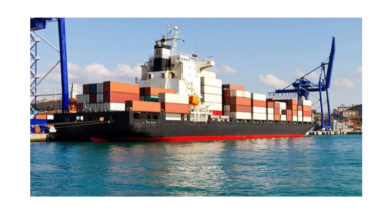A Cut Above Competition?
During SGI manufacturers and suppliers focused on application and total solution. In an exclusive interview Dominiek Arnout Agfa Graphics’ VP Inkjet talks about Agfa’s strategy to become a one stop shop for their customers.
SGI 2015 presented a wide range of equipment from printing to finishing, from media to ink and you name it. But SGI wasn’t about equipment per se. In this edition of the Middle East’s leading signage show manufacturers and suppliers focused on applications and total solutions. Agfa Graphics boasted one of the biggest stands in the show, highlighting a wide range of products and for the first time an all new state-of-the art cutting table.
Dubbed as Acorta, the new automatic cutting and finishing plotter aims at cardboard, digital, and signage printers. Agfa Graphics says Acorta uses advanced technologies such as an auto recognition system to automatically localize the printed objects and the position of the reference points on the cutting table, as well as the substrate’s height to avoid manual set-up of the job parameters. Acorta features cutting speeds of up to 102 m/min. Its 40 vacuum zones are automatically activated where and when needed.
Does Acorta signal Agfa Graphics’ new approach to the whole signage production cycle? To find out more we sat down with Dominiek Arnout, Agfa Graphics’ VP Inkjet. Fortunately Arnout, who has been working with Agfa Graphics for 25 years, is a veteran in inkjet technology and R&D. As a chemist he has been involved in development and production of film-based technology. The good thing about international exhibitions is that you get to meet high-caliber professionals such as Arnout that offer some pretty strong arguments about the company’s technology. To start we asked a simple question: Why the new cutting table?
“Our main strategy is to offer a total solution to our customers including printers, inks, software, media, new applications, automation and finishing products. We want to be a one-stop-shop for our customers. On the other hand we want to help our customers to shift to industrial applications which are in demand these days. Acorta is a true industrial and powerful machine. It is integrated into our total workflow solution. Acorta is an intelligent kit with all the bells and whistles. It is a heavy-duty machine. Asanti, Agfa’s professional sign & display workflow solution, offers some unique advantages when it is connected to Acorta. For example, if you take in the design, Asanti automatically generates a cutting file and sends it immediately to the cutting device, so the job can be cut without any interruption.
Also, the communication between software and printer has been streamlined. It means, if you change the parameter setting at the printer while printing, the system will memorize it, so that if the operator needs to reprint this particular job after let’s say one month, he can do so and obtain exactly the same printed result. Asanti integrates easily to our Apogee workflow as well. So for commercial printers who want to jump onto the large-format and digital printing bandwagon it represents an ideal solution,” explains Arnout.
Fair enough. But does Acorta allow Agfa Graphics to be a cut above competition? It is no secret that each manufacturer in the world of signage industry has carved out a special niche for itself. Efi is focusing on LED technology, HP is championing latex technology. It seems that Agfa Graphics’ competitive edge is its total solution offering, in which Acorta also plays a role.
According to Arnout now Agfa Graphics is offering a wide range of printers for the low-end as well as high-end markets, including flatbed, roll-to-roll and hybrid presses. But perhaps the real strength of Agfa is ink. However, it seems that the high cost of inkjet inks does not allow this technology to take the world by storm.
“Considering the value of these inks for our customers, I don’t think they are expensive,” comments Arnout and adds: “We believe UV inks are the most environmentally friendly inks available today. We manufacture these inks ourselves and a lot of knowhow, investment and science goes into that. As you probably know, Agfa has a very strong chemical and imaging background.
Our UV ink is large in gamut reproduction and very low in consumption – which results in the much appreciated ‘thin ink layer’. Agfa UV inks are reliable and consistent. For example the development of our low-migration inks, which by the way recently won an award for their innovative nature, started from molecular level. We are also extending our ink portfolio, introducing more flexible inks for outdoor applications and inks dedicated to provide outstanding adhesion on polypropylene and polystyrene media. Today our customers want to do more POP/POS work.
They are actively seeking possibilities to expand the application scope allowing them to grow their business. Often, this expansion goes into the area of industrial applications where inkjet printing becomes digital manufacturing. Thanks to our in-depth understanding of the interaction between ink, media and print head, we are in a position to enable and guide this move to industrial and semi-industrial applications. Today we support printing on glass, metal, textile and several other (e.g. flexible ceilings) industrial applications.
UV inks offer more value to printers. Value that solvent or eco-solvent are not always able to deliver. We believe the full potential of UV inks is yet to be explored. Having said this, we are no strangers to other types of ink technology, which – given the fact that they prove to offer important added value – we will not hesitate to develop and provide to our customer base.
Apparently the missing link for Agfa to be a total solution provider is media. Arnout says at the moment the company has no ambition (except for “Synaps”, an Agfa made polyester-based product designed for high-quality sign & display applications) to develop and manufacture its own broad flexible and rigid media portfolio. “However, we do have an important and very successful (sourced) media business in Nafta. We started an exercise to duplicate the Nafta success formula in Europe as well as in the Middle East and in China.
In conclusion, we won’t stop developing, enhancing and fine-tuning our entire product portfolio. The inkjet market today reminds me of the CtP market 15 years ago. When CtP was initially introduced people didn’t know exactly what they wanted from the technology, till all of a sudden customers clearly stated their need for convenient, consistent, reliable, integrated, automated and highly productive system solutions. Today people are expecting the same from inkjet technology. That’s why we are not just offering good image quality but fully integrated and reliable operating systems, backed up by an efficient service & support organization.
Our aim is to help our customers to continue to grow their sign & display business and furthermore, to enable them to expand their business scope into the emerging and growing industrial inkjet markets,” concludes Arnout.





